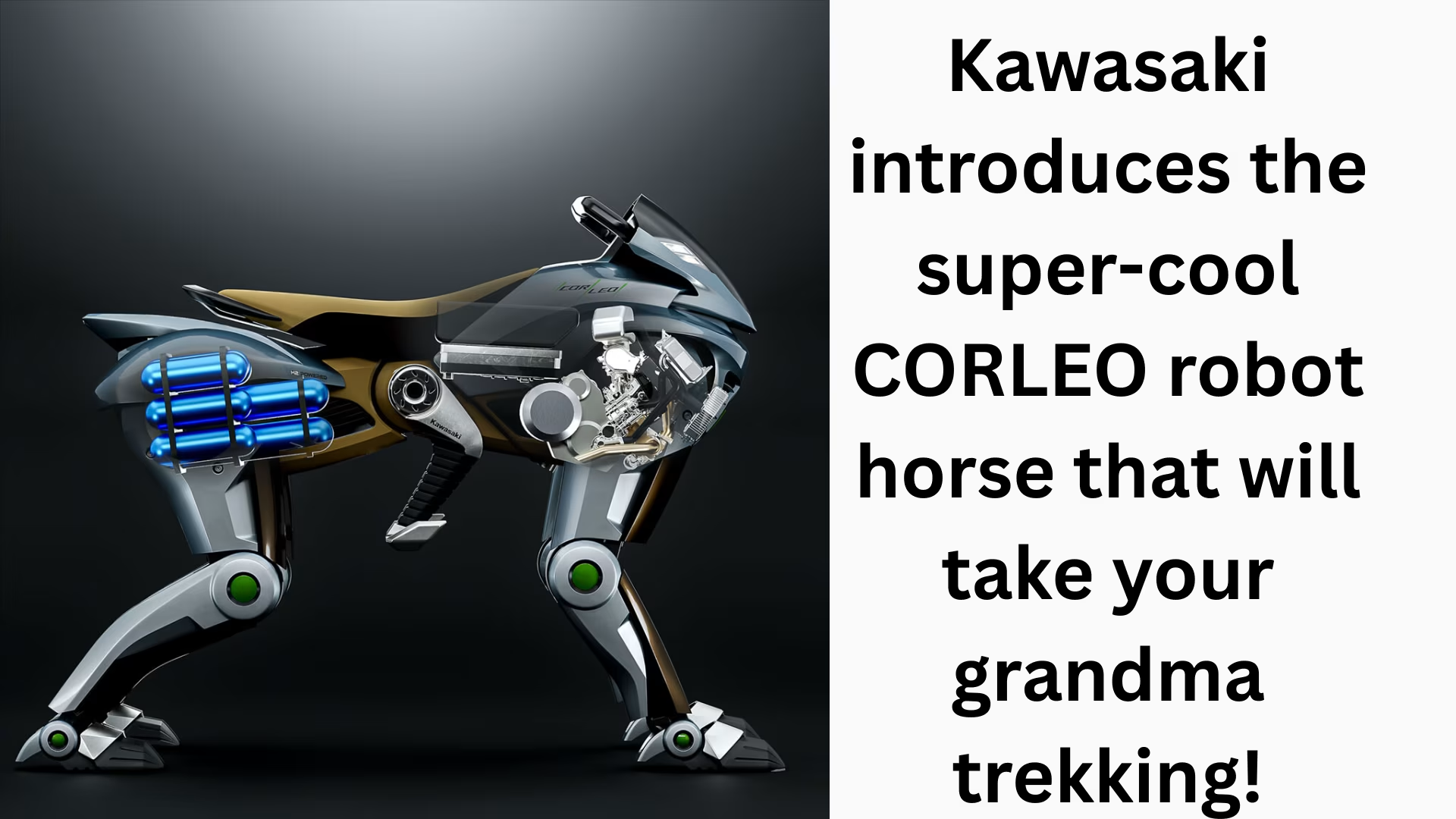Kawasaki has recently introduced several innovative mobility solutions that are designed with the human “inherent instinct to walk” in mind. The company believes that movement is the root of happiness and a better life. All of these concepts will be presented over the next five days at Kansai Expo 2025 in Osaka, where Kawasaki will show how their technologies can keep the joy of walking alive while keeping up with changes in society.
The most special of these is CORLEO, a revolutionary personal mobility device that is a wonderful combination of robotics and Kawasaki’s motorcycle engineering. The machine resembles a horse and allows access to places that were previously impossible.
CORLEO has four robotic legs with “slip-resistant” rubber hooves. These legs can also walk on surfaces like grass, rocky paths, and debris. Riders control it by shifting their weight through the handlebars and stirrups and can also adjust the position according to their comfort.
This robot horse is powered by a 150cc hydrogen engine, which is connected to a hydrogen canister mounted at the rear. This engine produces electricity that drives the motors installed in all four robotic legs. Its instrument panel shows important information like hydrogen level, center of gravity, and navigation route. For traveling at night, this system projects light on the road to make the journey easier.
Want to grow your business organically? Contact us now
Although CORLEO aims to maintain the joy of riding, its practicality is still in question. Robotic legs, hydrogen power, and off-road capability – combining all these in a single system in an affordable and scalable way is not easy.
Alongside CORLEO, Kawasaki will also showcase another concept ALICE SYSTEM, a new vision of future public transport – ensuring comfort and accessibility for every passenger. A third concept, O’CUVOID, will also be showcased, which is an affordable hydrogen power generator for Kawasaki motorcycles.
While all these ideas are currently in the concept stage, their impact on personal and public transport will depend on how Kawasaki solves the technology, environmental, and societal challenges associated with them.












